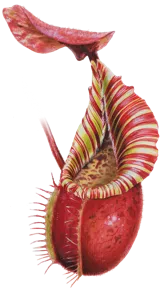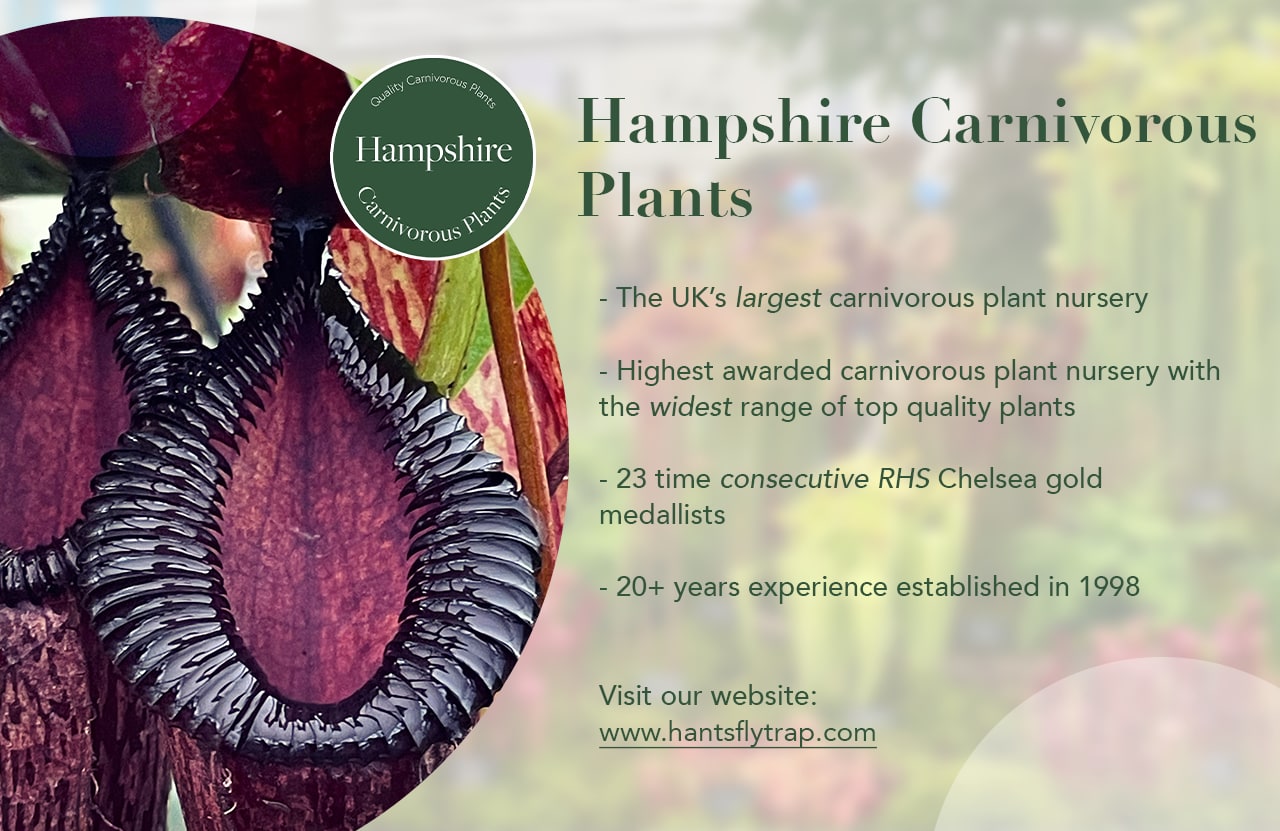Nepenthes rajah
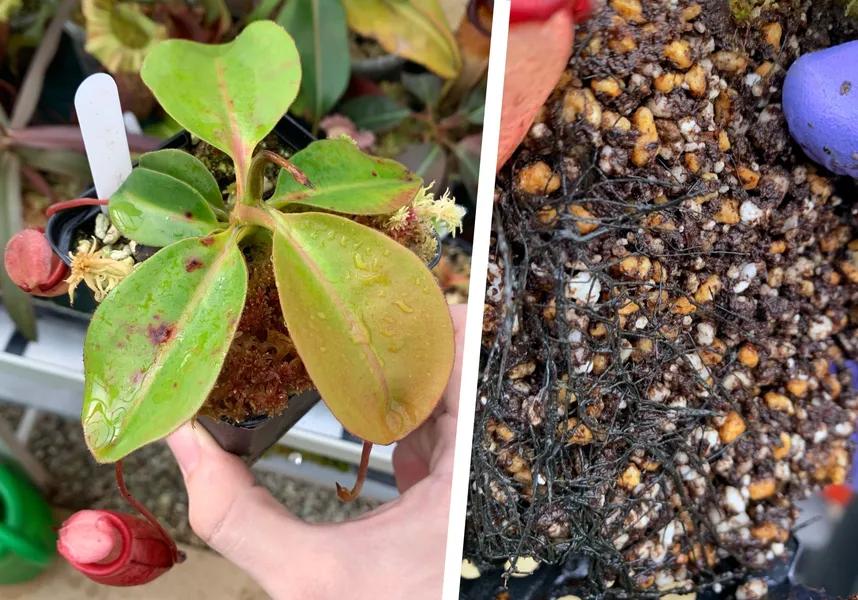 Extensive root development on one of my small N. rajah plants
Extensive root development on one of my small N. rajah plants 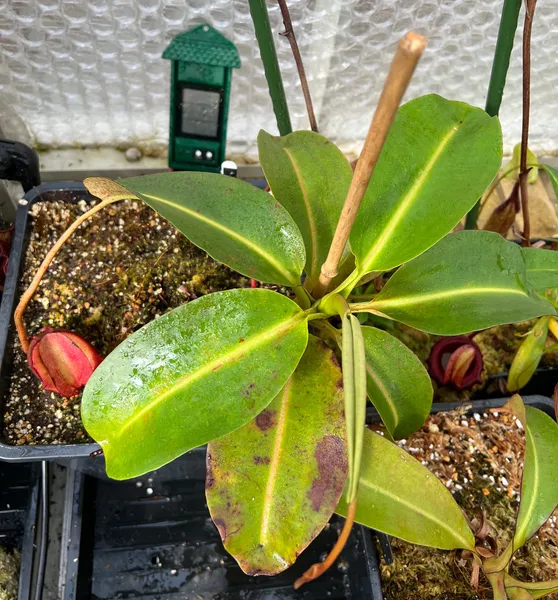 My largest seed-grown Nepenthes rajah
My largest seed-grown Nepenthes rajah 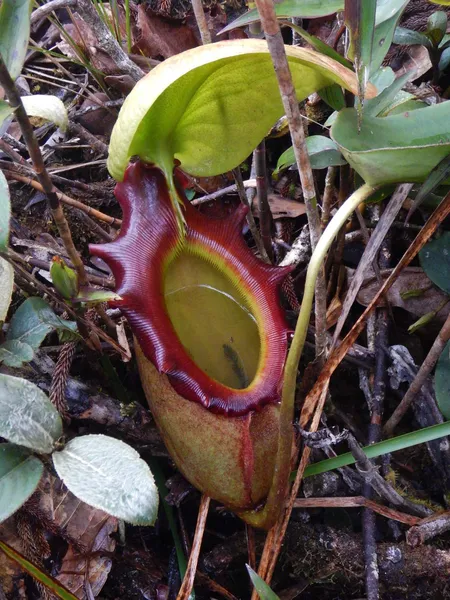 N. rajah on Mt Kinabalu, by the late Christophe Maerten
N. rajah on Mt Kinabalu, by the late Christophe Maerten 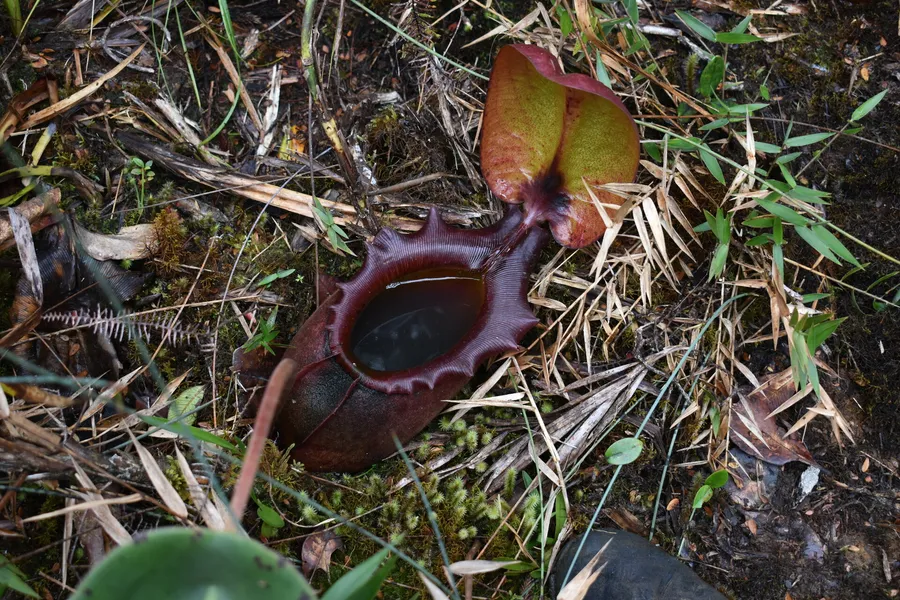 N. rajah on Mt Tambuyukon, by James Klech
N. rajah on Mt Tambuyukon, by James Klech 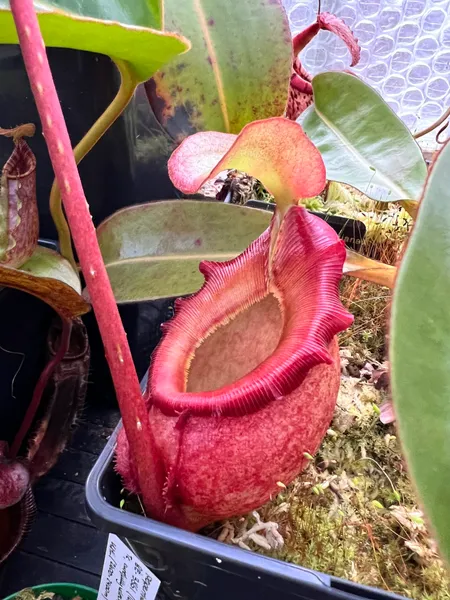 Pitcher on the previous plant
Pitcher on the previous plant 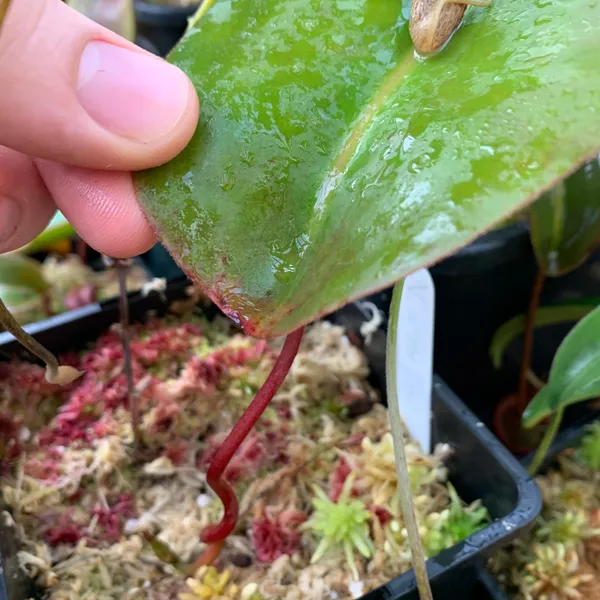 The peltate tendril insertion on N. rajah
The peltate tendril insertion on N. rajah Description & Care
Nepenthes rajah is an iconic species, and one of the most famous of all carnivorous plants. The species was first described in 1859 by Joseph Dalton Hooker, a British botanist and close friend of Charles Darwin, who named the plant after an Indian king. He wrote:
“This wonderful plant is certainly one of the most striking vegetable productions hitherto discovered, and, in this respect, is worthy of taking place side by side with the Rafflesia Arnoldii.”
N. rajah grows on Mt Kinabalu and Mt Tambuyukon in Borneo. It is famous for its enormous traps, which in the wild these can hold well over 3 litres of liquid. It often traps vertebrates like geckos and frogs, and has even been recorded to catch small mammals such as rats. Like Nepenthes lowii, this species has also developed a mutualistic relationship with tree shrews - the large domed lids produce nectar, which the shrews will feed on while perched over the mouth of the pitcher. The shrew’s droppings land in the pitcher, giving the plant an additional source of nitrogen!
Other noteworthy characteristics of Nepenthes rajah include its lovely thick leaves and peltate tendril insertion - this is where the pitcher tendril connects to the underside of the leaf, rather than the tip of the leaf. Nepenthes undulatifolia and Nepenthes peltata are similar in this regard.
In cultivation, I’ve found N. rajah to be a moderately challenging plant to grow. It grows steadily when given proper highland conditions, but does require very good light and high humidity. N. rajah can often sulk when moved or repotted - this, combined with the species’ huge root structure (see photo above), mean I generally advise growers to overpot more than they would with other species.
How I Grow It
| Media | Ultramafic substrate - peat, perlite, kanuma (1:1:1). Use a large pot to accommodate N. rajah's extensive root structure. |
| Water | Damp but not wet. |
| Light | Very bright, diffused light. |
| Fertiliser | This species can take a lot! I fertilise both roots and pitchers with Maxsea regularly |
| Temperatures | 12°C (54°F) minimum year-round, with summer highs of ~ 30°C (86°F). |
| Humidity | 70% during the day, rising to over 90% at night. |
Learn more about cultivation with my guide to growing Nepenthes.
Day & Night Temperatures
Nepenthes rajah is a highland species, found at elevations of between 1500 and 2650 meters. This range is highlighted in orange above, and equates to temperatures of approximately 19 - 28°C during the day, and 9 - 18°C at night.
See Also
I've written profiles of the following hybrids involving Nepenthes rajah:
Habitat
| Native to | Borneo |
| IUCN Red List status | Endangered |
| Natural hybrids | N. burbidgeae, N. edwardsiana, N. fusca, N. lowii, N. macrovulgaris, N. stenophylla, N. tentaculata, N. villosa |
Buying N. rajah
| Availability | Hard to find, despite being in tissue culture. The species is also protected under CITES Appendix I, making international shipping very difficult. |
| Borneo Exotics codes |
|
| Recommended nursery | California Carnivores Hampshire Carnivorous Plants |
